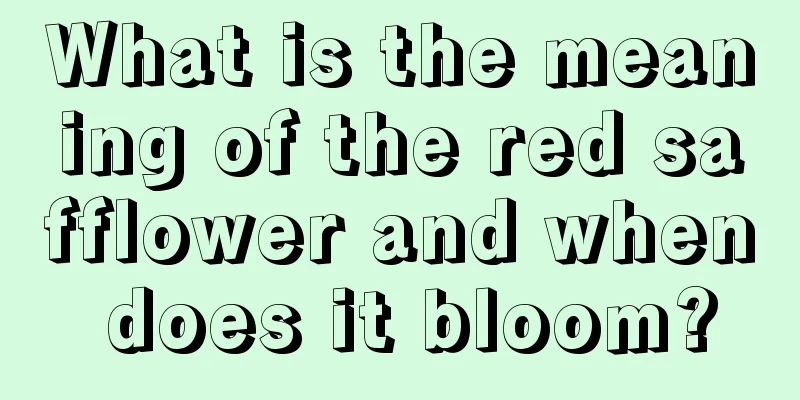What is the meaning of the red safflower and when does it bloom?

1. Flower LanguageThe flower language of impatiens is "heart of love". The flowers are brightly colored and have a long flowering period, representing the love for each other, which can last for a long time. Moreover, it only has one color, just like people in love, with only each other in their eyes. Therefore, you can give it to your lover, symbolizing the relationship between the two of you and that you can love each other forever. 2. Flowering SeasonThe sagebrush usually blooms in summer and autumn, and most of the flowering period is in autumn, approximately from June to October. However, with proper care, it can bloom all year round. Nowadays, the flowering period can be changed by changing the length of daylight hours and pinching the tips of the flowers. If you want the plant to bloom early, you can block the sunlight appropriately and provide it with a short period of light to help its flower bud differentiation. If sowing is done early in spring, the light hours will not be very long, which is very beneficial to plant growth. In addition, it is necessary to properly prune and apply appropriate fertilizer after the flowers fall to ensure that there are enough nutrients to maintain its growth. |
>>: Is Kalanchoe poisonous? How to grow it indoors?
Recommend
How to dry daylily
Preparation for drying Before introducing the met...
How Peonies Survive the Winter
1. Wintering Tips 1. Move indoors: Some areas in ...
Key points of high-yield cultivation technology of winter wheat
Winter wheat, also known as winter wheat or autum...
How to keep seeds of forget-me-not and how to plant them
How to save seeds of forget-me-not Forget-me-not ...
Maintenance of Kalanchoe in summer
1. Provide shade in time When caring for the plan...
How to water Kalanchoe
Don’t water unless it’s dry, and water thoroughly...
Pests of Elaeocarpus edulis and their control
Pests of Elaeocarpus edulis and their control The...
How to raise a bear paw
1. Breeding environment 1. Potting soil: It is be...
Do red beans prefer shade or sun?
Do red beans prefer shade or sun? Red beans are e...
Cultivation methods and precautions of colored leaf taro
Colored taro is very easy to grow. May to Septemb...
Layering propagation of purple-leaf dwarf cherry
The layering time of purple-leaf dwarf cherry The...
How to grow orchid seedlings? Can one orchid seedling survive?
1. How to raise 1. Choose soil: When growing and ...
How to grow radish
1. Sunlight For growing radish, you can provide a...
How to grow pink blue bird succulent
The leaves of the Pink Bluebird succulent are thi...
How to grow magnolia in summer
1. Provide shade in time The intensity of sunligh...









